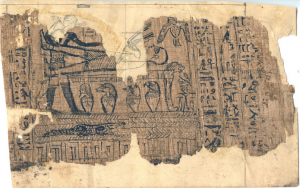
[This article was written by Kerry Muhlestein and originally posted at Meridian Magazine. An excerpt is reposted here with permission.]
When Napoleon invaded Egypt he opened it up to a wave of Western exploration that the country had never known. Soon after his defeat there, many European countries sent consuls to Egypt with one major goal: bring back amazing antiquities—and that is exactly what they did.
The man who oversaw Egypt on behalf of the Ottoman Empire, Mohammed Ali, was eager to seek Western European help in modernizing his country. He, and most Muslims of the time, also viewed the ancient Egyptian monuments as relics of abominable paganism. So he was happy to trade monuments for modernization, and a flood of artifacts flowed from Egypt into European museums, creating the foundation for some of the greatest museums of the world, such as the British Museum, the Louvre, and the Berlin Museum.[i] In one of the most interesting twists of history, this movement of artifacts would bring the Book of Abraham to Joseph Smith.
Many people have questions about the Book of Abraham. It is an interesting, yet complex subject.[ii] In order to help people find answers to these questions, I will write a series of columns, each addressing a separate subject. In these essays I will attempt to be fully forthcoming and transparent, honestly talking about the answers we have, the mistakes we have made, the incorrect assumptions people have long believed, and the answers we don’t have.
This first column will only be a history of the papyri. Other subjects, such as the source of the Book of Abraham, the interpretations of the Facsimiles, the Kirtland Egyptian Papers, etc., will follow in future columns. These columns will not be heavily footnoted. They are instead designed to be read quickly by the lay reader, the honest seeker for truth, and to have just enough notes to point people who want more to places where they can read further. The story is interesting and complex enough to fill more than one volume of books, but here we give a more condensed version.[iii]
[To continue reading this article, please visit the Meridian Magazine website link above.]
